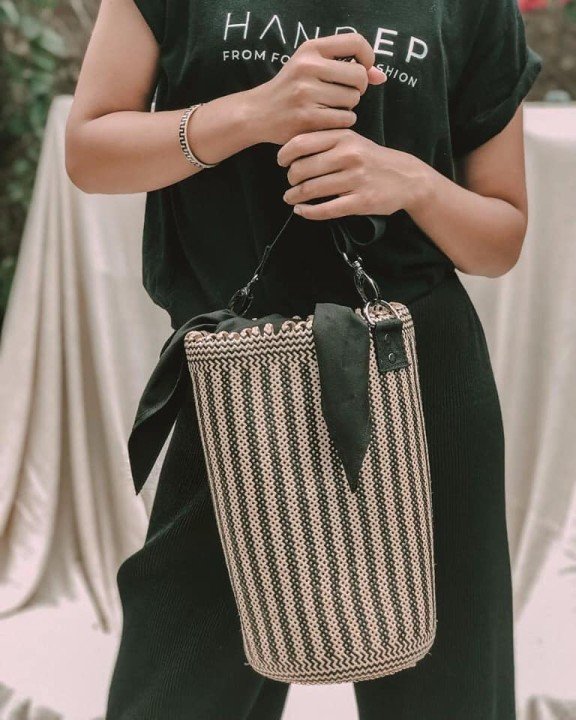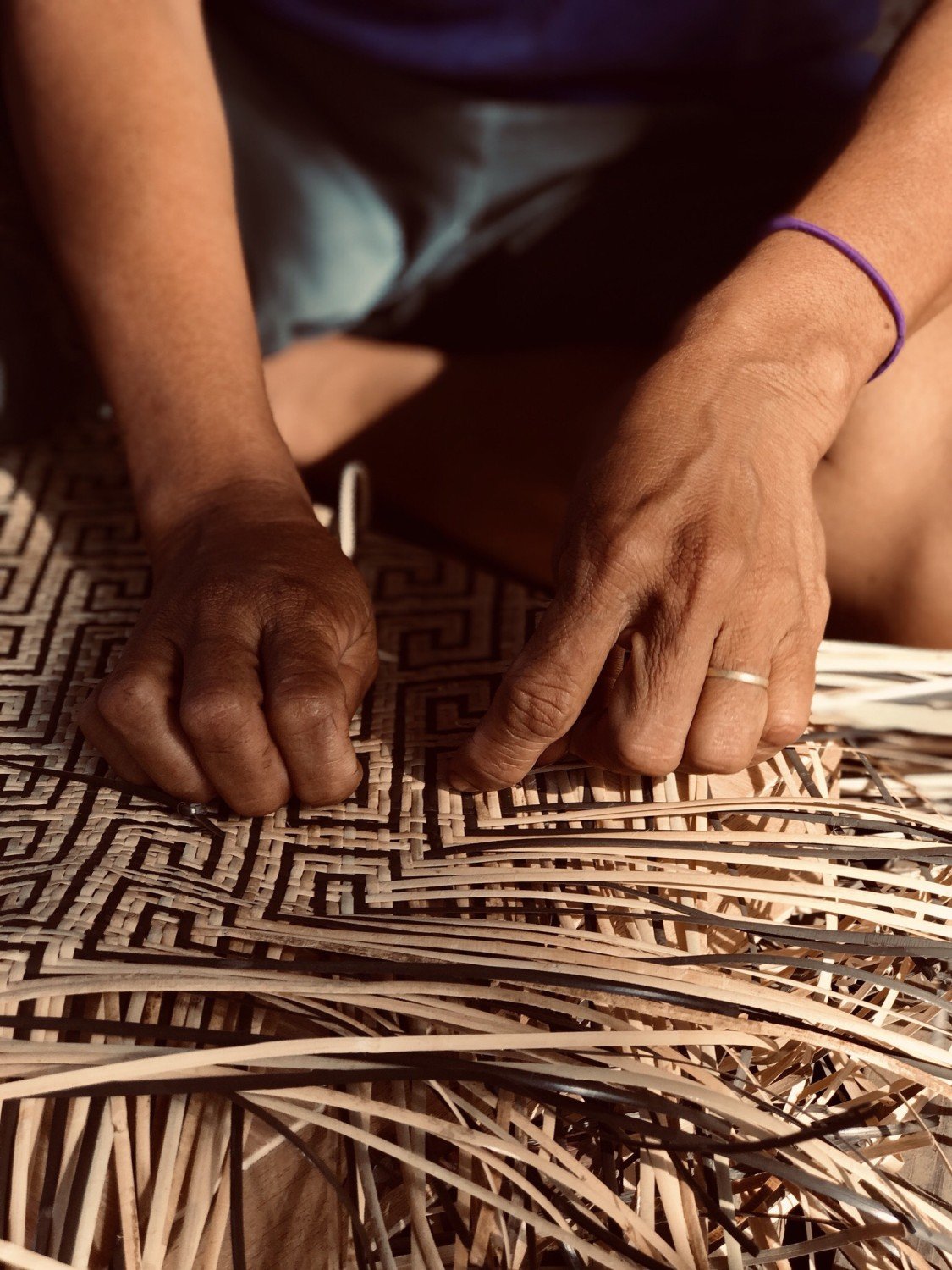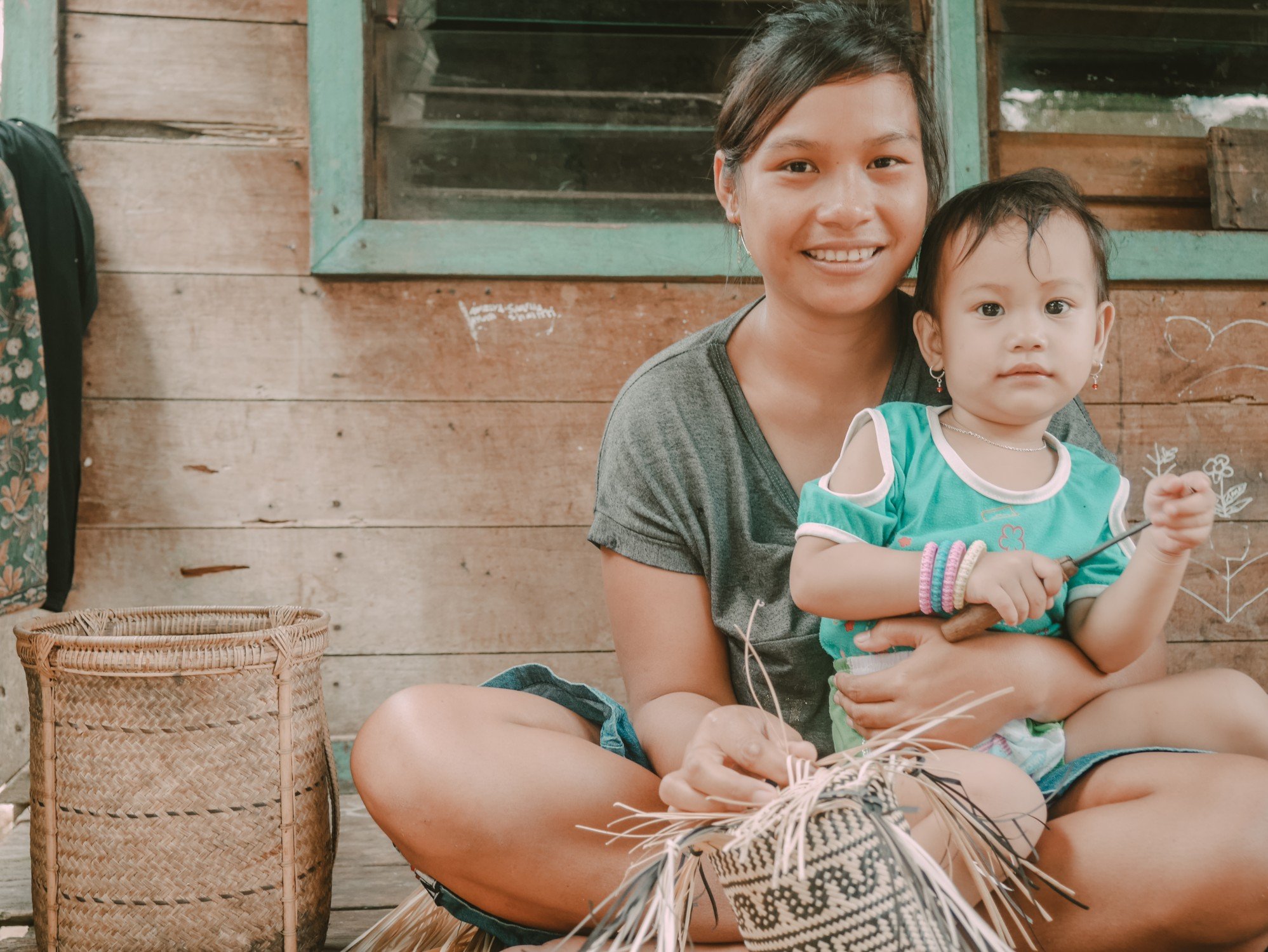8 Facts About Handep's Products
The Lamus, one of Handep's Bucket Bag Collection
Curious about the origin of our products and how they are made?
As the name says, HANDEP; Handmade Ethical Products. Here are some interesting facts about the masterpieces of the Dayak in Central Kalimantan you have to know
1. IT IS HANDMADE.
Think about how machines create mass-produced products, making things faster and cheaper. HANDMADE is the opposite, where its products take time, patience, care, and love. Only a few can be made. Every step is scrutinized to ensure the products are perfect, which is more time-consuming but ends in high-quality products.
2. MATERIALS ARE OF HIGH QUALITY.
Most of our weavers try to find the best quality rattan in the forests or their forest garden. Often they have to go miles to get the rattan and get hit by thorns, bitten by mosquitoes, and other potential dangers in the forests. This process makes the materials more expensive than rattans that are randomly processed by machines in bulk and with no sorting system. Our dyeing processes are also natural, using local leaves containing high latex.
Our local rattan small-holder farmers
3. MATERIALS AND PROCESSES ARE ECO-FRIENDLY.
Our weaving products are made of 80% rattan and 20% additional materials like fabric, faux or genuine leather. All rattans are sourced sustainably from the forests and individual forest gardens. Rattan is a naturally renewable palm. Indonesia, especially Kalimantan, is home to the majority of rattan globally. Preserving and cultivating rattan contributes significantly to forest preservations since rattan is a creeping plant that needs trees to climb upward. Thus, trees need to be maintained instead of being chopped down to make ways for rattan to grow. Therefore, rattan can only grow in forests and cannot be developed as a monoculture.
We also ensure that our waste is biodegradable and continuously minimize our production waste by turning the rattan waste into other products. Our production processes are primarily handmade, using traditional tools that require no fossil fuel at all.
Our ibu harvesting leaves used in our natural dyeing process
4. OUR WEAVERS ARE EXPERT
Most of our weavers have been weaving since the early age of 10, equipped with intergenerational knowledge and skill. Along the way, they invented techniques and methods by themselves. You should try weaving, and tell me how you find it afterward!!!
5. OUR PRODUCTS ARE UNIQUE
Each of our products is made by different weavers, meaning different hands. There is a uniqueness in each piece. For example, each product has a different pattern that embodies a unique philosophy or story.
6. HANDEP DOES FAIR TRADE with the weavers. We only take 20-30% of the profit margin for every product. We ensure that the women who make so much effort, energy, and time into the products are rewarded fairly. The profits aren’t for GREEDY CAPITALIST accumulating wealth at the expense of others. Instead, it is for champion women who work so hard to survive and create a better life in this complex world. Handep is the opposite narrative.
7. HANDEP’S SUPPLY CHAIN IS TRANSPARENT AND TRACEABLE
We (the weavers and farmers ) source all the rattan materials sustainably from the forests or gardens. We know exactly where they are sourced from and who makes what. For example, you see that every piece comes with a weaver’s profile, not only for the sake of transparency but also to acknowledge and appreciate the weavers.
8. WE GIVE BACK
We share a significant proportion of our net profit with the partner weavers and farmers in the forms of capacity building and village infrastructure development.
You probably have heard of Handep, a newly established fashion brand from Central Kalimantan. Founded in late 2018, we are a social enterprise that works with Dayak women and small farmers to create fashion accessories based on traditional Dayak weaving patterns.










